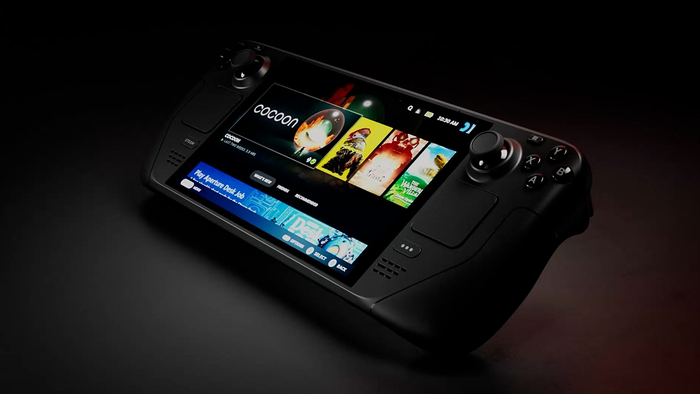
Featured Blog | This community-written post highlights the best of what the game industry has to offer. Read more like it on the Game Developer Blogs.
Exploring social awkwardness through games

Reposted from my blog at: http://www.crystallinegreen.com/?p=1127
I recently attended a workshop at University of Lincoln entitled “Performance and Games”. In this case, performance meant performing arts, which I was a touch apprehensive about, since it was an invite only event, and an area where I have no prior experience (not counting my (in)famous dancing when on nights out with friends). As it transpired, I was far more useful for my ‘performance’ than the programming and game development skills I had intended to bring to the table.
I’d envisioned something much closer to a game jam, spending a large portion of the workshop laying down code of some description. In fact, we spent the entirety of the first day talking through a whole bunch of different ideas in teams of four or five people. That was quite a departure from what I’m used to in my professional work, where ideas are all but valueless, save for their successful execution in a finished game.
Rambling Awkwardly
My team’s suggested theme / starting off point for exploring was social awkwardness, which we discussed for a while before steering into a long conversation about sexual harassment and discrimination in the games industry and wider workplace. Having not worked in a “triple-A” games studio, and been largely independent, working alone or in small groups for the entirety of my career in games, all my sources on the subject are second hand. Furthermore, I seem to have, more by accident than design, ended up following a lot of feminists and those writing about issues of discrimination within the games industry on twitter or sites like this one.
So it was interesting for me to talk to the others to see if some of the ideas I’d formulated on the subject tallied with their experiences or thinking. A discussion which itself is quite awkward to navigate when you’re still getting to know a bunch of strangers for the first time (the irony of which was not lost on us).
By the morning of the second day, I was fretting that my team would have nothing to show for our being there. Fortunately, the others in the team had done what I hadn’t, which was prepare for the event by bringing a large toolbox, (demo programs, code snippets and games they’d previously made which could be easily re-purposed). In just a few hours, we were able to solidify our ideas into a veritable game design, construct the game and play it through once, though from a technical perspective, largely without my help. Consequently, I felt slightly sidelined, and that probably goes some way to explaining my enthusiastic playing of the game itself.
Naked Quake
On the game specifically, I think we all recognised we hadn’t really reached a consensus on the harassment issue, so we rowed back to a theme we’d touched earlier on the first day, which was awkwardness around nudity with strangers. The example of sauna etiquette was discussed, in which different countries had different norms around what was acceptable to wear (or not wear) when in the sauna.
Our first idea to explore this was a first person shooter game in which players could upgrade their weapons by taking off various items of clothing. So a sock might only get the player a basic pistol, whilst they would need to take their underpants off if they wanted to get their hands on a rocket launcher.
Players would all be in the same room, but use Oculus Rifts (or other virtual reality headgear). This would mean they wouldn’t directly see each other stripping, but would still know the other players in the room were potentially nude or undressed.
Balancing issues and details somewhat put a dampener on everyone’s enthusiasm for the idea. Someone who was already good at FPS games might not need to lose more than a couple of socks and a jumper to defeat someone not familiar with the genre. Instead, we decided to run with the ideas about clothes equalling points in a game, and of using the Rifts as a sort of blindfold.
Clothes Points
The result was a game where each round, players would take off items of clothing and place them in a basket or designated spot. Each item of clothing would carry a different value (sock, scarf = 1 point, jumper = 2 points, shirt = 3 points, and so on). Whoever had the biggest points score would win the round. The winner would be the player who won the most rounds after everyone had run out of clothes (or decided they had reached their limit of what they were willing to take off). There was also a time limit on each round, to force players to make their decisions (and undressings) quicker than otherwise.
Both players would stand in the same room wearing Oculus Rifts, connected to Kinect cameras pointed at the other player(s). The other player would be represented as a 3D model of a person, movements of the model corresponding to the movements of the player. In this way, players could “see” each other’s moves without actually seeing them.
For our version of the game, there was also a “dungeon master” in another room, whose role was two fold: To adjudicate who had won the round, by means of being able to view webcams pointed at the baskets in which the players were placing their clothes, (but away from players, so as to not see them). And to add tension to the game, the dungeon master would also relay voice commands and special instructions to the players as the game went on.
Thankfully, seriousness and tension went out of the window once the game started. Our dungeon master blasted the full monty theme tune through the speakers into the room as we made our choices, or gave us until the end of the A-team theme to get our trousers off. Quick fire rounds gave us 5 seconds to fumble with our shoes or belts.
More importantly, I won this first ever playing of the game, which we quickly named “You Can Keep Your Rift On”. And I didn’t have to even have to take my underwear off! In fact, at the end of the game, I found out I needn’t have gone anything like as far as I did, as my opponent was still mostly dressed.
Acting the Part
Context is definitely the key to understanding the game. The specific context for me was that I had spent the last day and a half with the other people in the workshop, found them to generally be liberal, open minded people. I didn’t have anything to fear from them, but at the same time, as mentioned earlier, I had a bit of a point to prove.
Being one of the architects of the game itself, I had plenty of time to mentally prepare for it. I actually made up my mind before I went into the game how far I was willing to strip down by the end of the game, and since there was a break between each round ending and the timer for a new one starting, I was deciding in advance what clothes I was going to take off that coming round.
In the end, we were a bit pressed for time, so only had one Rift hooked up with the Kinect. I still wore the other Rift, but without input, acting effectively as a very expensive blindfold. I think that lead me to concentrate on thinking more abstractly in terms of my strategy and how to out-psych my opponent, rather than trying to guess how he was moving. I did some fake moves as though I was taking off a shirt. I took my shoes and socks off in one round, but then didn’t place my shoes in the basket until a later round. I also pretended to take my socks off again after having already taken them off, which due to the imperfections in the old-style Kinect, apparently made it look as though I was turning myself inside out. I also had to think creatively, taking my phone, wallet and keys out of my pockets and using them as extra ammunition. Or placing the Rift’s adapter/connector box in my basket (since it wasn’t actually connected to anything) as an extra ‘item’ I could try and score points on.
As well as not worrying about the other player’s moves, I think not seeing the other player probably made me less conscious of what I looked like to them. I felt more self-conscious once I took the Rift off at the end of the game, than during the game itself.
Not to say I wasn’t self conscious at all, but, I actually went further in stripping off than I had originally planned. I had decided to stop before taking off my trousers, but knowing that I’d done no exercise since some time in January, I was aware that wearing trousers slightly too tight around the waist probably wasn’t especially flattering. Ditch the trousers and it wouldn’t look so bad. Body image isn’t something I usually worry about, but it was still a factor here.
The other half of it was that we had a small audience of 3 people in the room, which wasn’t something we’d really planned. I think it helped that the audience was all female, (and that goes back to the having-something-to-prove point), but also, as the game progressed, the combination of the dungeon master’s cheesy voice over, combined with the ever increasing fits of laughter from the audience that I could hear on one ear, combined with my competitive spirit, pushed me to go further than I’d initially expected.
Public Sauna
As for taking the game outside of that context, it would certainly produce a different result. For example, our team discussed the possibility of bringing the game to a public space. Have the players in a booth or temporary structure, so they couldn’t be seen from the outside once they entered. Or perhaps other members of the public outside could watch on some big TVs the same view as what the players and dungeon master were seeing through the Rifts and webcams. But not actually see the players in the flesh.
For me, if I encountered that on the street, I’d probably shy away from it if anything, especially if there was peer pressure from my friends. The main problem I’d anticipate though, which wasn’t an issue when I played, is trust. Players have to have trust in the game and the people who are running it, not to have hidden cameras and suddenly display them getting naked to all the public outside (or worse, live streaming to the internet).
They also have to trust the other player doesn’t take a sneak peek from under their Rift during the game. I think this is where the game breaks down slightly. It’s possible to put up a dividing curtain or put players in separate cubicles, but once you start giving them a sense of privacy from each other, at that point, those ideas around knowing your opponent is getting naked in the room with you (even if you can’t see them) start to erode. It begins to depart from the initial idea of awkwardness around nudity (though not necessarily public nudity) with strangers.
As well, one person asked me whether I would be more willing to play again if I was up against someone I found sexually attractive. To which I couldn’t honestly say No. We often skirt around the subject of sex in games, which is exactly what I’m going to do as well, but it’s definitely another dimension the game has to it.
The video of playing the game still needs editing and uploading, so meantime, here’s one of the other workshop team’s creations: Mario Kart being played with a violin as controller:
About the Author(s)
You May Also Like








